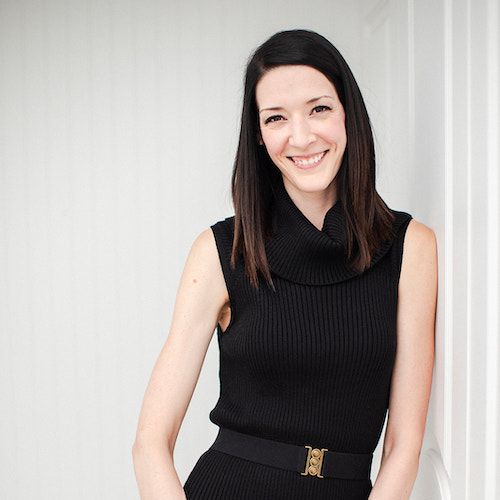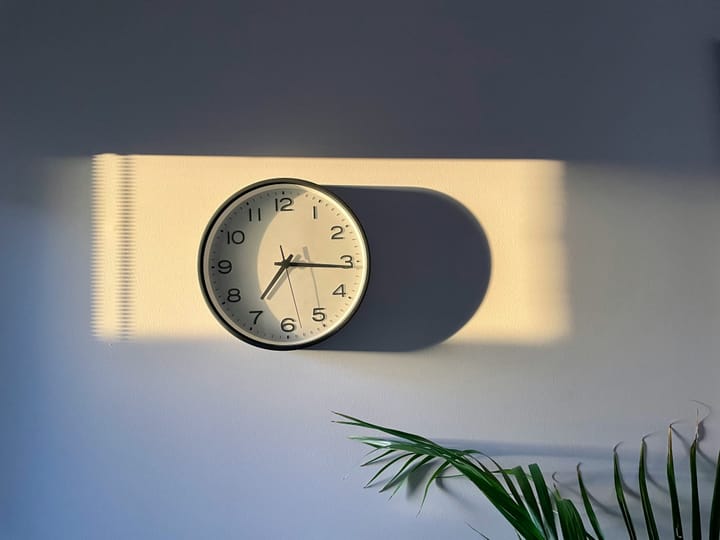Exercise is a Productivity Tool Part 2: How to Add Daily Exercise to Your Productivity Toolkit
Learn 8 strategies to help make daily exercise a go-to in your productivity toolkit!

In my previous article, Exercise is a Productivity Tool Part 1: Breaking Down the Untrue Stories We Tell Ourselves, I reframed some of the negative ways we think about how fitness fits (or doesn’t fit) into our lives.
I made the argument that exercise is important due to the well-studied benefits to:
- Reduce stress
- Elevate mood
- Increase concentration and focus
- Improve sleep
- Increase mental stamina
- Enhance creativity
Stress and poor sleep are productivity killers. Better mood, concentration, focus, and mental stamina are productivity enhancers. It doesn’t matter how organized your inbox and calendar are if you have no energy to do anything. Regular exercise just makes sense!
I think daily exercise is better than exercise a few times a week, because:
- It’s easier to establish a habit when it is done every day.
- If you only exercise a few times a week it’s easier to push it off…and then never do it.
- Daily exercise is like compound interest. The health benefits build over time and build faster if done daily.
If you're still with me: it’s easy to say and know that exercise is important. Actually adding exercise to your daily routine to get the benefits to your productivity and mental health is harder.
How to add daily exercise to your productivity toolkit
You can choose to add movement to every day, even if just for a short time. You can find where exercise fits in your life, but you have to do a bit of work to move past the mental blocks, think about it in a new way, and then make it happen!
Here are 8 strategies that will help you add daily exercise to your productivity toolkit.
1. Reframe exercise as a productivity tool
For many, exercise has all kinds of negative connotations:
- Body image and weight loss
- Unpleasant past experiences (Grade school gym class anyone???)
- Physical discomfort
- …and a long list of other reasonable explanations as to why exercise is not prioritized
The goal here is to disconnect exercise from these negative connotations and instead reframe exercise as:
- Something that makes every day easier
- Something you could (gasp) enjoy
- A productivity tool that will help you do the things that are important to you
There are a million and one productivity hacks. Think of regular exercise as one of the best productivity hacks out there.
Instead of dropping exercise as something you don’t have time for when life gets stressful or busy, think of it as a shot of energy and clarity when you need it most.
2. Answer the 4Ws and decide you your rhythm
Work through the 4ws to find out where daily exercise fits into your life:
1. What type of exercise will you try?
2. Where will you do your exercise?
3. When will you exercise each day?
4. Who will you exercise with?
To answer these questions, ask yourself:
- Do you prefer solo or group activities?
- Do you want to do something on a team?
- What equipment do you need to start (if any)?
- Do you want to do something that makes you go out, like a class or sport?
- Do you want to do something you can easily do from home for more flexibility?
- Do you want something you can do during pockets of the workday or after-hours?
- Do you want to try something new or something you are familiar with?
- What combination of activities will fit in a typical week?
For example, when I first started my daily exercise practice, yoga was easy to add. I chose yoga because I prefer solo exercise that I can do at home, with a lot of time flexibility, and all I needed was a mat (and even that is optional).
3. Ask someone to be your exercise buddy
Accountability is a good motivator, especially when you first start to establish your daily exercise habit. Ask a friend, family member, or partner to be your exercise buddy. It will get you both started, and you can encourage each other to keep it going.
For example, I have two exercise buddies:
1. My husband: We exercise at the same time unless he has a squash game scheduled. We do different activities in different parts of our house but break for our exercise at the same time.
2. My sister-in-law: We share our activities on Strava so we can both see what the other person has done each day. We both find it motivating and encourage each other.
Is there someone in your life who could use a mental health and productivity boost, too? Ask them to be your exercise buddy!

4. Tie exercise to an existing daily habit
Another way to add exercise as a daily habit is to tie it to an existing one (also known as habit stacking). If you are already doing something daily, adding on another habit is easier than doing something by itself.
Some examples include:
- Daily meals - You likely eat breakfast, lunch, dinner, and snacks! Add a daily walk at lunch, or a quick stretching routine to your afternoon snack break.
- Wake-up or wind-down - Most people have fairly standard wake-up and wind-down routines. What if you extended them by 15 minutes or half an hour with some yoga?
- End of the workday routine - What if you added your exercise activities as part of logging off. Shut down your computer and do a quick pilates routine, or go for a bike ride!
5. Tie exercise to something you enjoy
For some, exercise will never be fun. Fair enough. If you can’t find a type of fitness that you like, think about what you could tie it to that you DO like.
- Watching TV: Turn on those Seinfeld reruns or whatever Netflix series has your eye this month and hop on that bike, treadmill, or row machine.
- Listening to an audiobook or podcast: Lift some weights or walk your neighbourhood while listening to the latest basketball hot takes, business trends, or get lost in a sci-fi saga.
- Listening to your favourite tunes: Turn on your favourite album and pound the pavement on a run, or practice your worst dance moves with some Zumba.
I am all about running while listening to an audiobook. It gets me out the door because I want to know what happens next!

6. Identify the smallest steps to start
Start where you are at today. You don’t need to buy a bunch of gear or equipment. Think about your current fitness level and what fits into your life right now. What is the smallest step you can take to get started?
It might be:
- Choose a yoga video the night before and set your alarm 15 minutes earlier. I recommend Yoga with Adrienne!
- Put your running shoes by the front door for a walk.
- Lay out your stretchy clothes in the morning so they are ready for your after-work Pilates session.
- Set a reminder for your phone to pop up for an afternoon bodyweight freestyle.
7. Add exercise to your ideal week
If something isn’t in my calendar, it probably isn’t going to get done. I book my exercise time in my calendar at a recurring time that works for me. This is my ideal time, given my usual schedule, and corresponds to my ideal week. Some days it needs to be adjusted because of meetings or other commitments, but it is always booked, and I always do it.
When you add exercise to your calendar, you are committing time to it. It’s a way to visually prioritize exercise and see where in your day or week it will fit.
Protect that time!
8. Keep the streak!
Another potential motivator is to start an exercise streak. Start with small goals, like doing 15 minutes of exercise of some type every day for a week. And then see if you can keep it going for 30 days, then 60, and so on. There might be occasions where you have to break the streak, and that’s ok. You just have to start it up again and see how high you can go!
For example, I started out on January 1, 2018, on a 30-day yoga challenge, and I am now, as of publishing, at 1634 days in a row. For me, keeping the streak motivated me to exercise, even on the days I didn’t feel like it (which have been many). I couldn’t break the streak!
How long can you keep yours?!
There are a lot of mental blocks around exercise and the stories we tell ourselves about it. Once you break them down, it takes a bit of work to fit exercise into your daily routine, but adding it will pay dividends in your daily energy, focus and overall productivity.
Do you need some help reprioritizing exercise in your days? Let's do it together.
Share
Ashley Janssen

Productivity consultant, writer, speaker, serial entrepreneur, chaos calmer, introvert, cat-lady. Lover of books, fitness, old fashioned’s, basketball, and video games.
Follow me on
Twitter
or
LinkedIn.
Hire me for
1 on 1 productivity consulting
or
speaking.
Related articles

When You Do Things Matters

What If Being Lazy Was a Good Thing?


Comments ()